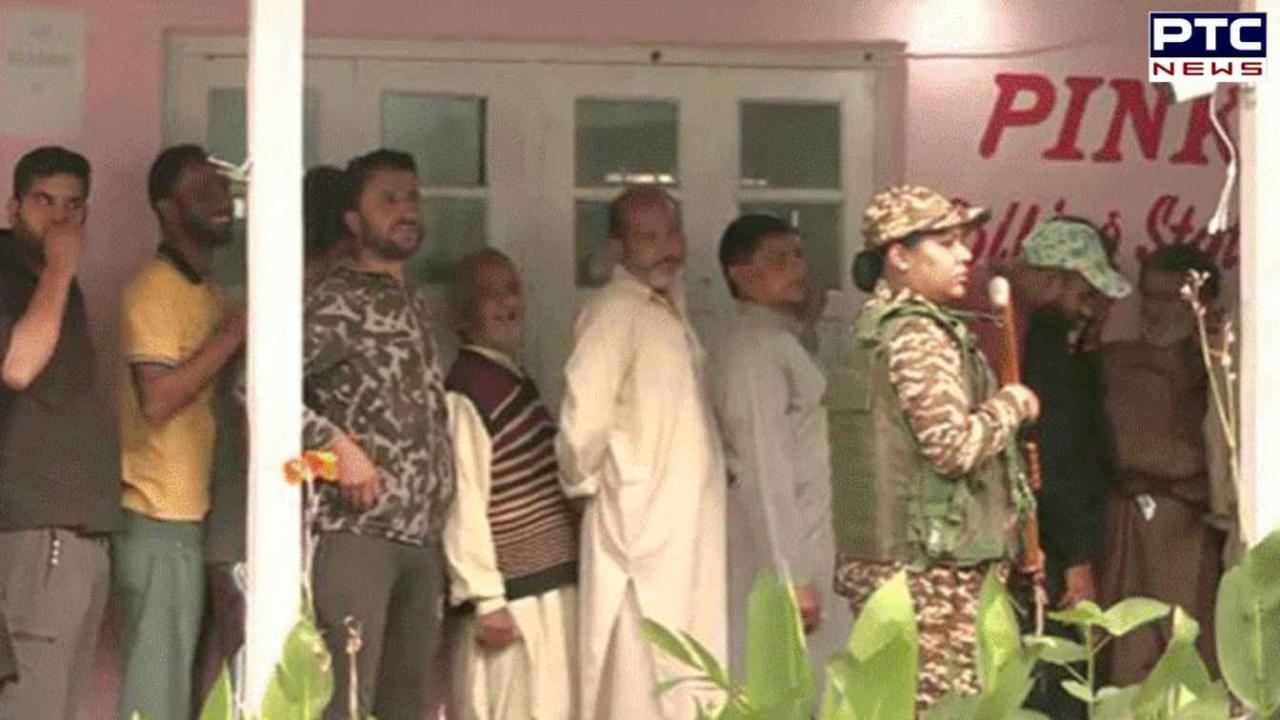- April 2, 2025
- Updated 2:22 am
Jammu and Kashmir Phase 2 voting: All eyes on Omar Abdullah and other key contenders
PTC News Desk: The second phase of the Jammu and Kashmir assembly elections, held after a decade-long gap, began today. This phase covers 26 assembly seats spread across six districts, many of which are located in regions historically dominated by separatist sentiments.
As voters head to the polls, this election is seen as a significant test for political parties in the region, especially following a period of political unrest and turmoil.
Key Highlights of Phase 2 Voting:
- Voter Turnout and Candidate Pool: Approximately 26 lakh eligible voters are expected to cast their votes today, deciding the fate of 239 candidates competing for 26 seats. The stakes are high for both established political figures and new candidates.
- Constituencies in Focus: The seats up for election in this phase are spread across several constituencies, including Kangan (ST), Ganderbal, Hazratbal, Khanyar, Habbakadal, Lal Chowk, Chanapora, Zadibal, Eidgah, Central Shalteng, Budgam, Beerwah, Khansahib, Chrar-i-Sharief, Chadoora, and Gulabgarh (ST). In addition, polling will take place in Reasi, Shri Mata Vaishno Devi, Kalakote-Sunderbani, Nowshera, Rajouri (ST), Budhal (ST), Thannamandi (ST), Surankote (ST), Poonch Haveli, and Mendhar (ST).
- Prominent Candidates: Among the key figures contesting this phase are former Chief Minister and National Conference leader Omar Abdullah. Abdullah is contesting from two constituencies: Ganderbal and Budgam. He will be closely watched, as his political career has been central to the region’s electoral landscape.
Other significant contenders include Jammu and Kashmir BJP President Ravinder Raina, who is contesting from the Nowshera assembly seat, and Jammu and Kashmir Pradesh Congress Committee President Tariq Hamid Karra, who is vying for the Central Shalteng seat.
- Electoral Test for Political Leadership: The voter turnout and results of this phase will serve as a litmus test for the political claims made by the incumbent and opposition parties, particularly with regard to the region’s development over the past five years. Political observers are keen to see if the electorate feels that recent improvements have strengthened their faith in democratic processes.
- Separatist Stronghold: Of the 26 seats in the second phase, 15 are located in central Kashmir, a region known for separatist activity and resistance to Indian administrative control. The Srinagar region, which includes constituencies like Khanyar, Zadibal, Lal Chowk, Eidgah, and Hazratbal, has historically seen low voter turnout due to separatist influence.
- Previous Voting Trends: In the first phase of the election, held on September 18, voter turnout was notably high, with 61.13% of eligible voters casting their ballots across 24 constituencies in seven districts. This turnout was a positive indicator, though still lower than the 2014 record of 66%. Today’s voting results in these separatist-affected areas will reveal whether this trend continues.
- Future Phases and Vote Counting: The third phase of the Jammu and Kashmir elections is scheduled for October 1, with the final vote counting taking place on October 8, alongside the Haryana state elections. The results will offer a clearer picture of the political landscape in the newly reorganized state of Jammu and Kashmir.
The election results are eagerly awaited, as they could shape the region’s political trajectory and determine how the electorate views both the ongoing democratic process and the political leadership in a region long mired in conflict.
Recent Posts
- Crown of goddess Kali, gifted by PM Modi, stolen from temple in Bangladesh
- Hezbollah leader survives assassination attempt amid Israeli strikes that kill 22 in Beirut
- ਕ੍ਰਿਕਟ ਦੇ ਬਦਲੇ ਨਿਯਮ, ਹੁਣ ਇਸ ਕੇਸ ‘ਚ ਦੁਬਾਰਾ ਨਹੀਂ ਮਿਲੇਗੀ ਬੈਟਿੰਗ, ਮੰਨਿਆ ਜਾਵੇਗਾ
- ਸਚਿਨ ਤੇਂਦੁਲਕਰ ਦੇ ਬਰਾਬਰ ਪਹੁੰਚੇ ਜੋ ਰੂਟ, ਪਰ ਵਿਰਾਟ ਦੇ ਇਸ ਰਿਕਾਰਡ ਤੋਂ ਅਜੇ ਵੀ ਦੂਰ
- Ratan tata death: ਸਿਰਫ ਵੋਲਟਾਸ ਹੀ ਨਹੀਂ, ਸਵੇਰ ਤੋਂ ਰਾਤ ਤੱਕ ਤੁਹਾਡਾ ਕੰਮ ਟਾਟਾ ਦੇ ਬਿਨਾਂ ਨਹੀਂ ਚੱਲ ਸਕਦਾ
